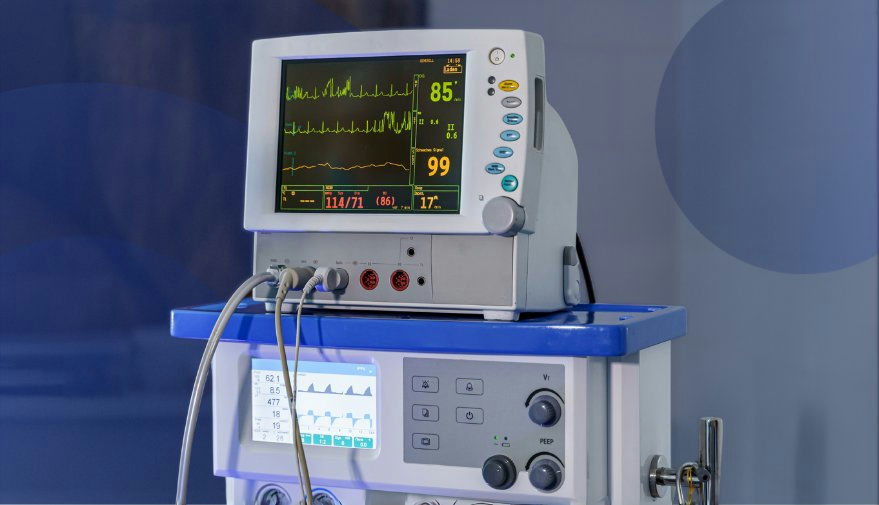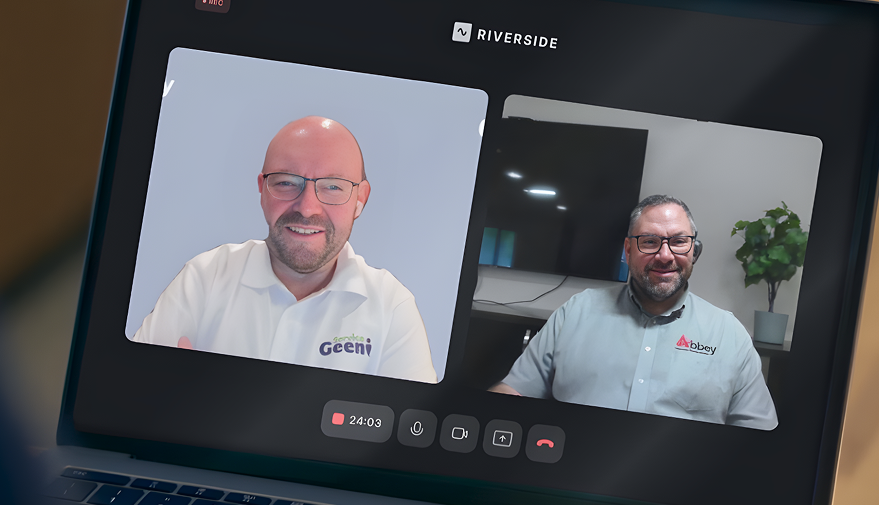
In this article we explore best practices for medical equipment maintenance, look at Field Service Management Software and how it supports you in the process, and share a checklist with all your medical equipment maintenance essentials.
Why is Medical Equipment Maintenance Important in Healthcare?
Medical equipment maintenance ensures everything works as it should, which allows healthcare professionals to focus on patient care. Fail to maintain medical devices, and there can be some major consequences:
Cost: maintenance represents up to 60% of a device’s running costs. When every penny counts, eliminating unnecessary repairs leaves more money to spend on patient care.
Safety: poorly maintained medical equipment can result in misdiagnosis, delayed treatment, injury (to patient and practitioner), and death – not something you want on your conscience.
Compliance: poor maintenance can mean your customers fail to fulfil their regulatory obligations, landing them with legal and financial penalties (and ending your relationship).
What Are the Main Types of Medical Equipment Maintenance?
There are 3 main types of medical equipment maintenance:
Reactive Maintenance (also known as corrective)
Think emergency call out. Reactive maintenance takes place once the equipment, or a component, has failed and needs repairing/replacing. Within healthcare, you ideally need to avoid this at all costs, because equipment failure risks patient safety.
Preventive Maintenance (also known as planned or proactive)
Think regular, scheduled maintenance. With Planned Preventive Maintenance (PPM), the goal is to keep equipment up and running, and to address potential issues before they cause a device to fail.
Predictive Maintenance
Think intervention before anything bad can happen. With Predictive Maintenance, the data produced by medical devices is continually monitored to identify patterns that indicate an issue is likely to occur soon, so you can intervene earlier.
How Often Should Medical Devices Be Serviced or Calibrated?
Ideally, medical devices should be serviced or calibrated every 6-12 months. However, there are so many factors that can affect this. For example, the age of the equipment, how often it’s used, the environment it’s kept in, and the manufacturer’s recommendations. It all needs to be taken into consideration when setting the maintenance schedule.
To help manage the inventory, split equipment into 3 buckets:
- Low-risk equipment is your basic essentials, like patient scales or examination lights.
- Medium-risk equipment includes diagnostic tools, like ECG machines or blood pressure monitors.
- High-risk equipment is likely to support life, such as ventilators and anesthetic machines.
What Are the Best Practices for Maintaining Healthcare Equipment?
As outlined in the ‘Managing Medical Devices’ guidance, we recommend the following to ensure proper healthcare equipment maintenance:
Equipment maintenance policies: to outline how each device should be maintained and repaired, and the service levels you’ll deliver for customers.
Scheduling: to document how often each device needs to be serviced, in line with the manufacturer’s recommendations and its usage.
Training: assigning appropriately trained engineers to each job, ensuring customers’ equipment is serviced safely and effectively.
Inspection routines: spelling out exactly what needs to be checked and how often, and when potential issues are identified, how to escalate them for early fixes.
Who Is Responsible for Maintaining Hospital Equipment?
Hospitals rely on external service providers to deliver specialist maintenance and calibration. FSM software helps you allocate the right engineers, track work done across sites, and provide hospitals with confidence that every piece of equipment is compliant and safe to use.
How Should You Track Medical Device Maintenance Records and Logs?
Service providers need to give hospitals complete visibility of maintenance activity. FSM software makes this simple by storing digital service logs, calibration certificates, and inspection records in one place. That way, you can share audit-ready documentation instantly with your customers, demonstrate compliance, and prove the quality of service you’re delivering.
How Can You Manage the Full Lifecycle of Medical Devices?
If we split a medical device’s lifecycle up, there are 3 key stages: acquisition, usage, and end-of-life protocols.
Equipment Acquisition
Medical devices are either purchased, leased, or loaned. Whenever new devices are introduced into a healthcare setting, it’s essential that service schedules are created straight away, based on manufacturer guidelines for servicing, calibration, and maintenance.
Usage
In this second stage, equipment is used to support patient care, so maintenance comes into play. Your customer’s medical device management policy will detail what this looks like for their inventory. While your contract outlines the service delivered – reactive, preventive, predictive.
End-of-Life Protocols
There comes a point where every device needs to be replaced. When equipment reaches end-of-life, FSM providers may support customers with safe decommissioning or refurbishment, particularly where specialist disposal requirements apply.
What Is a FSM Tool and How Does It Help Manage Healthcare Equipment?
Field Service Management Software will help you stay ahead because it connects everything – asset history, parts usage, condition ratings, and engineer activity – all in one intuitive system. It has smart scheduling, helpful reminders, and real-time insights, so you can plan maintenance with confidence, fix issues faster, and make better decisions to protect your customers and ensure patient safety.
FSM software makes it easy for you to:
- Schedule and track calibration checks and digitally store certificates and test results.
- Monitor performance trends to identify equipment requiring maintenance.
- Assign calibration jobs based on engineer expertise and location to minimise delays.
- Track job progress in real-time to ensure tasks are completed on schedule.
- Ensure parts availability for recalibration and adjustments to prevent service disruptions.
What Do Regulators Expect from Your Equipment Maintenance Programme?
As part of any medical equipment maintenance programme, service providers need to understand the regulations that impact their customers, and ensure maintenance services support compliance.
Managing Medical Devices: outlines a systematic approach to the acquisition, deployment, maintenance, repair and disposal of medical devices.
Health and Social Care Act: now dictates equipment must be, “Clean, suitable for the intended purpose, maintained, stored securely and used properly.”
Provision and Use of Work Equipment Regulations (PUWER): requires equipment to be right for the job, used safely by trained people, and maintained so it remains safe.
Lifting Operations and Lifting Equipment Regulations 1998 (LOLER): covers equipment like hoists, raising aids, and slings, to ensure they’re safe to use.
ISO 14971: outlines a process for risk management throughout the medical device lifecycle.
How Can You Prepare for Maintenance Audits in Healthcare Settings?
- Know the regulations that apply to medical equipment maintenance.
- Check maintenance policies are clear and outline key tasks and responsibilities.
- Create an inventory of all devices with their maintenance schedule.
- Carry out service reviews with your customers to ensure maintenance processes are being followed and properly documented.
- Ensure your engineers are trained to spot potential issues early and record them for customers.
- Use a FSM tool to keep track of everything and make your life easy!
Quick Checklist: Medical Equipment Maintenance Essentials
Inventory
- Maintain an up-to-date inventory of all medical equipment, including make, model, serial number, and location.
- Record warranty details, service contracts, and maintenance schedules.
- Track maintenance history for each device, including repairs and upgrades.
Preventive Maintenance
- Develop a maintenance calendar with reminders for each device.
- Keep manufacturer manuals and technical documentation readily accessible.
- Document services and outcomes for compliance and audit purposes.
Safety and Performance Checks
- Inspect mechanical integrity, such as loose screws, worn parts, and damaged casings.
- Check for proper calibration of measurement devices.
- Test alarms and safety features operate correctly.
Compliance
- Ensure maintenance records meet regulatory standards.
- Provide customers with periodic compliance reports, showing that maintenance practices meet required standards.
- Provide proof of maintenance during inspections.
Training
- Keep a training log for your engineers to ensure they’re equipped with the latest servicing knowledge.
- Encourage feedback from engineers and customers to identify recurring equipment issues.
Final Thoughts: Improving Healthcare Equipment Reliability with the Right Tools
From equipment for routine checks to diagnostic machines and surgical tools, FSM Software for medical device management helps you make sure every device is maintained to the highest standard.
Service Geeni’s Field Service Management software is a great fit for medical equipment maintenance companies because it makes it easy to track service history, parts used, and maintenance schedules. It keeps documentation in order for inspections, audits, and compliance. As well as streamlining maintenance workflows to help your customers focus on patient care, while keeping equipment running smoothly and efficiently.
Medical Equipment Maintenance FAQs
What is the difference between preventive and corrective maintenance?
Preventive maintenance proactively looks for potential issues, so you can fix them before equipment fails. In contrast, corrective maintenance is reactive and seeks to fix devices once the fault has occurred.
Is medical device maintenance a legal requirement?
Yes. Regulations covering medical device maintenance include: Managing Medical Devices, Health and Social Care Act, PUWER, and LOLER.
How do service providers support hospitals with MHRA maintenance compliance?
Service providers play a key role by delivering scheduled maintenance, keeping digital records in line with MHRA requirements, and supplying customers with audit-ready documentation
Can software help track and manage equipment maintenance?
Absolutely! Field Service Management Software will help you stay ahead with proactive maintenance because it cuts downtime, eases engineer workloads, and keeps operations productive, efficient, and stress-free.
What’s included in a typical hospital equipment maintenance checklist?
A typical hospital equipment maintenance checklist will look for signs of wear and tear, check calibration, test alarms and safety features, note whether there are repairs or replacement parts, and if appropriate, make sure software updates have been done.
Download Full PDF
Read More…

Book Your Demo Today







